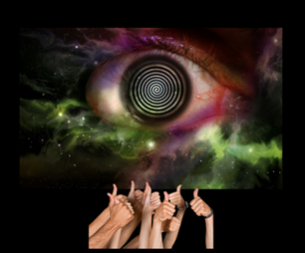Dissociation: A New Teaching Reveals How Hypnotherapy Can Help
Dissociation: A New Teaching Reveals How Hypnotherapy Can Help
Dissociation is exceptionally common in our society. Yet, it is not commonly understood, and treatment plans are not always as effective as they could be. According to David Hartman and Diane Zimberoff, in their latest publication on the subject, dissociation “refers to the phenomenon of feeling, sensation, behavior, image, and meaning becoming dissociated from one another as a defense to a traumatic experience.”
This lack of presence in the here and now is something that comes up in clinical settings, as well as daily life, with great frequency. Dissociation can be pathological, or it can be ordinary. At times, such as when someone is absorbed in watching a movie, is having a spiritual experience, or when a creative individual is in a state of “flow,” it can be harmless, and even helpful.
In cases where dissociation contributes to pathology, however, it can create major behavior disruptions. From a lack of an ability to focus or pay attention to details to cases of Dissociative Identity Disorder (DID), patients whose lives are disrupted by dissociation are found on a wide spectrum.
Where does dissociation come from?
When a person experiences trauma, it is common to react by dissociating. Even in cases where the personality has not split into many parts, there can be long-term effects that impact the person’s capacity to function fully. It is even possible for actual changes in the brain to take place, whereby the memory is compartmentalized in ways such that the memory is separated from the person’s identity.
The way that trauma affects its victims is profound. Understanding dissociation fully, and how to help the client heal from the trauma that provoked it, is essential in treating dissociated individuals. There are many research studies and theories on this topic, and wading through all of them can be quite daunting. Fortunately, there is now a resource that will help you find better ways of understanding dissociation and how you can best treat it.
The Dissociation Spectrum and Treatment: Wellness Has a Course for That!
Are you interested in learning more about the dissociation spectrum and the ways dissociative patients can be treated? A new course, complete with 2 CE credits, is available on line. An asynchronous presentation by David Hartman, co-founder of The Wellness Institute, is available online now. This course provides a deeper understanding of the dissociative spectrum, and evaluates treatment options that serve clients suffering from this affliction. It is titled The Dissociation Spectrum: Pathological through Psychospiritual. As The Wellness Institute always has done, this course blends clinical and spiritual aspects of healing in ways that truly work in the best interests of our clients.
The course is a comprehensive, yet incisive, study of the dissociative spectrum, and a description of contemporary methods that help therapists understand and treat it. It includes the 45-page paper written by Hartman and Zimberoff, and a 2-hour presentation explaining the dissociation spectrum and how therapists can work to help patients heal the trauma that lies beneath their symptoms.
Heart-Centered Hypnotherapy® is chief among the modalities offered by Hartman in the presentation. It is, indeed, an excellent and effective modality that seems to be tailor-made for clients suffering with the effects of dissociation and trauma. Hypnotherapy takes the client back to the time when the trauma that created the part or parts of the personality to split from the client’s awareness, and provides opportunities to assimilate, integrate, and heal from the experiences
Learn Hypnotherapy Online at The Wellness Institute
Hypnotherapy is extremely powerful when it comes to helping clients process and heal from trauma, but that’s not all that it can do. By facilitating the communication between the conscious and subconscious parts of the mind, and guiding clients back in time to express previously repressed emotions, hypnotherapy can be employed in treating codependency, addictions, sexual abuse, mind-body afflictions, eating disorders, and so much more.
Enroll in the Six Day Hypnotherapy Training and Certification Program, and you can learn how to conduct hypnotherapy sessions in less than a week. After completing your practice sessions, you’ll receive dual certifications in Heart-Centered Hypnotherapy and Age Regression.
The Six Day Hypnotherapy Training and Certification Program is led by highly qualified teachers in real time. You will be able to interact and pose questions as the didactic material is presented. Teachers will also lead you through experiential learning segments, wherein you’ll acquire the skills to conduct sessions. As part of the training, you’ll get two chances to participate as therapist, client, and observer.
Once you achieve certification, you will qualify for Advanced Training at The Wellness Institute. Our community of more than 5,000 Heart-Centered Therapists will support you in a new way of treating your clients—and yourself—through modalities that include breathwork and psychodrama, as well as hypnotherapy.
Don’t delay. Whether you’re new to the Institute, or are already a Wellness Graduate, we know you’ll be enriched by thorough and erudite teachings of David Hartman in the Dissociation Spectrum Course.
If you’ve already completed the Six Day or another level of training, come on back and see how Wellness has grown into the digital age! You’ll be astounded at how well The Wellness Experience translates to the online format.
And, if you are new to us, and want to learn the very best way to treat dissociation, trauma, and all the related issues that stem from these situations,
Enroll in the Six Day Hypnotherapy Training and Certification Program Now!
As always, if you have any questions about Wellness Institute Programs, please contact our Operations Support Specialist. You can reach her through the website or by email.









